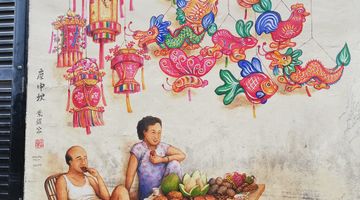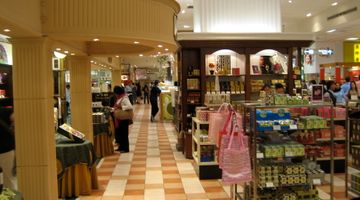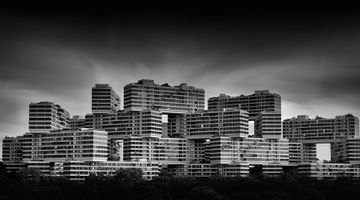Top–10 Most Colourful Festivals in Singapore
The rich sociocultural tapestry that encompasses the Singaporean melting pot is clearly reflected in the number and variety of vibrant festivals held throughout the year. Made up predominately of Chinese, Malay and Indian cultures, as well as a flood of foreigners in recent times, Singapore boasts a cosmopolitan energy with a distinctive multi-cultural lifestyle.
Festivals and celebrations in Singapore
This unique fusion of peacefully coexisting traditions, religions and cultures has lent the island-state to a year-round, jam-packed social calendar with colourful festivals ranging from religious celebrations, food festivities, sports events and sociocultural observances. This extraordinary hybrid is beautifully reflected in the abundance of festivals that are specific to each individual ethic group, as well as their particular religions. Furthermore, there are also significant holidays and anniversaries that are celebrated and acknowledged by the entire nation, such as Christmas Day, New Year’s Day, Chinese New Year as well as a few others.
The origins of the festivals vary from festival to festival and many have roots stemming from the celebration of deities, cultural sports, harvests, arts, fashion and food. For example, Vesak Day commemorates the birth, enlightenment and final nirvana of Buddha, whereas Deepavali is the most significant festival in the Hindu calendar and commemorates the victory of good over evil. Whereas other festivals hold no religious significance but rather focus on a key national interest or pastime; for example, the Singapore Food Festival, The Great Singapore Sale, Singapore International Film Festival or the Dragon Boat Festival amongst many others.
After much deliberation and consideration, we’ve rounded up the top ten most colourful festivals in Singapore that all prospective visitors might want to plan their trip around. Imagine pulsating, lively dancing; vibrant street parades; spectacular firework displays; bustling street stalls; feasts, buffets and an assortment of foods; and giddy, joyful locals and foreigners all coming together in shared celebration – these are but a few of the delights on offer.
From January to December our favourite ten festivals are:
Festival number 1: New Year’s Day (1st January)
With the big hullabaloo of the New Year’s countdown and mesmerizing firework display that calls in the new year in Singapore, the New Year’s celebrations holds many delights for visitors and locals on the island. As the clock strikes midnight on the first day of January, the new year is brought in with a bang and each New Year on the Little Red Dot holds its own celebrations and festivities. Being in Singapore for this celebration is well suited for travellers who are looking for a spectacular party and those who are looking to be blown away by the visual sights and displays. The best and most well-known waterfront events that are open to the public are The Marina bay Singapore Countdown and the animated Siloso Beach Party at the ever popular Sentosa Island. Clarke Quay; the famous shopping strip, Orchard Road; and Boat Quay are other popular party sites in Singapore over New Year’s.
Festival number 2: Chinese New Year (January – February)
Dazzling lights, cheerful colours and non-stop excitement are the orders of the day for the Chinese New Year in Singapore which is undoubtedly one of the most awaited celebrations in the country. Beginning on the first day of the first lunar month in the Chinese calendar, the celebration generally falls between the last week of January and beginning of February. The streets of Chinatown are a multitude of Chinese lanterns, gold and red decorations, dazzling sights, sounds and delicious smells of traditional Chinese treats and snacks. Many shopping malls offer excellent sales and promotions and the nation is a beautiful whirlwind of kaleidoscopic energy and colour. Locals celebrate by enjoying family feasts, visiting loved ones, spending time at temples, and exchanging hongbao (monetary gifts offered in red envelopes) or small Mandarin trees.
The ethnic quarter of Chinatown is also well-known for its lion and dragon dances which take place at both quays of the Singapore River. Following the end of the Chinese New Year celebrations, the Spring Lantern Festival occurs on the fifteenth day of the new year. Ten days after, the Lantern Festival is followed by Singapore’s largest parade – the ‘Chingay Parade’. This is a street and float parade including a diverse array of artistic performances that are sure to impress and dazzle all.
Festival number 3: Thaipusan (January – February)
Thaipusan is a yearly celebrated Hindu festival where over 50,000 people crowd the streets of Singapore in a colorful and lively two-day procession, bringing any and all traffic to a dead halt. The festival is celebrated in honor of Lord Murugan, also known as Lord Subramaniam, who signifies power, youth, and virtue, and is the demolisher of evil. Hindi devotees seek out blessings, offer thanks and attempt to fulfil their dutiful vows by carrying milk pots which symbolize fertility and abundance, and wooden kavadis – a semi-circular wooden or steel decorated frame that acts as a ceremonial sacrifice. Many devotees also pierce their bodies and tongues with steel skewers and rods creating quite the spectacle for onlookers. For anyone who is keen to get a closer look at a Hindu celebration, cultural enthusiasts or photographers, Thaipusan is unmissable.
Festival number 4: Vesak Day (May)
This festival is celebrated by Buddhists in Singapore and across the world to pay tribute to the birth, enlightenment and the death of Buddha. This festival is a time of happiness, reflection and peace and Vesak’s festivities start as the sun rises over the nation. Devoted Buddhists congregate at temples with offerings of flowers, candles and joss sticks to represent the transient and ephemeral nature of life. Only vegetarian meals are eaten, visits to the elderly are organized, mass blood donation drives are arranged at the hospitals, mantras are chanted and caged animals are released. Vesak Day is also characterized by beautiful and peaceful candlelight processions through the streets as well as the ‘bathing’ of a Buddha statue. A beautiful must-see for visitors.
Festival number 5: Singapore Dragon Boat Festival (May-June)
This event originated in China over two thousand years ago and the exuberance, even today, has not died down. Thundering drums, cheering spectators, waving flags and squeals of excitement fill the air while the sizzling smell of sticky rice dumplings (zongzi) waft across the crowds. The Singapore Dragon Boat Festival is held in honor of Qu Yuan, a highly regarded minister of state who was unfairly exiled by his emperor and as a result jumped in the river out of desperation and killed himself. Much adored by the villagers, the fishermen beat their oars in the water in an urgent attempt to keep the fish from eating his body and threw cooked rice in as a distraction. This legendary event resulted in the famous Dragon Boat Festival which is an energetic spectacle comprising of action, camaraderie and heart-breaking history. For those who love competition, sports and an electric atmosphere be sure to pencil this festival in.
Festival number 6: Singapore Arts Festival (May-June)
This festival generally occurs mid-year and stretches for a period of one month. Theatre arts, public film screenings, street performances, musical performances, dances and various displays of visual arts are incorporated by local as well as international participants. The plethora of exquisite art and performance pieces are displayed and acted out with the beautiful intention of hoping to inspire and captivate various audiences. For visitors who love arts and culture or for those looking for a motivational surge of creativity, this festival is sure to delight and enthral.
Festival number 7: Singapore Food Festival (July)
Eating, dining out and cooking seems to be a national pastime here in Singapore and what could be better than a festival held in the name of all things edible. Top features include workshops, food carnivals, Ion Orchard’s Chocolate Wonderland, hawker fare for as little as 50 cents, craft drinks, artisanal wines, curated picnic baskets and an open-air film based on local food under the stars. Festival goers are encouraged (as if they need to be!) to immerse themselves in all the culinary treats on offer which is an exceptional showcase that captivates Singapore’s diverse heritage and smorgasbord of cultures.
Festival number 8: National Day (9th August)
Rowdy songs, a pulsating atmosphere and beautiful displays are the top features of National Day. This spectacular festival is held in patriotic remembrance of Singapore’s bold and courageous rise to independence in 1965 and onward to being the exceptional powerhouse that it has become. This festival is witnessed by around 25,000 spectators each year and is held at the popular Marina Bay. Highlights of National Day include the parade, Presidential Gun Salute and the Grand Finale which is a 45 minute performance followed by a stunning and colourful firework show that lights up the sky. The ambiance at the festival is electric and cheerful and the wearing of red and white is strongly encouraged to represent the National Flag as well as the displaying of the flag itself. A fun aspect of National Day is the customary ‘funpacks’ that are given to each spectator containing various snacks, drinks and knick-knacks.
Festival number 9: Hari Raya Puasa (September – October)
Marking the end of the Islamic fasting month of Ramadan, the Muslim festival, Hari Raya Puasa, commonly known worldwide as Eid Ul Fitr, is celebrated with a massive home-cooked feast and quality family time. For non-observers of this festival, Singapore is buzzing with celebration and festivities in the form of lively night bazaars at Geylang Serai selling delicious, traditional Malay snacks, ethnic trinkets, clothes and jewelry. The atmosphere is one of happy celebration with colourful decorations adorning the streets and bustling crowds. The exquistite cultural performances of Malay song and dance draw in locals and visitors alike and leave observers captivated. Mosques are visited in the early morning and wearing one’s finest clothes is also a custom of Hari Raya Puasa. Foodies, cultural enthusiasts and those who love merriment and colour will enjoy this festival.
Festival number 10: Deepavali (October)
Perhaps my favourite of all Singaporean festivals, Deepavali or the Festival of Lights, is the most significant festival for the Indian community living in Singapore. Generally falling in October or November, celebrations in Little India begin weeks ahead of time. Deepavali is a five-day festival that represents new beginnings, the triumph of goodness over evil, or light over darkness. During this time the Indian ethnic quarter spills over with bright lights, bustling bazaars and mouthwatering Indian delicacies. Street stalls sell an assortment of goodies such as terracotta lamps, exquisitely sewn saris, flowers, massage oils, Indian sweets and so much more. This joyous festival is very family and community orientated and characterized by visiting loved ones, paying respect at temples, lighting oil lamps, exchanging sweets, lighting sparklers and partaking in flamboyant reunion feasts.
...
The festivals and celebrations in Singapore are a wonderful and colourful assault on the senses and in much the same manner that modern Singapore conducts all its affairs, these holidays are well-organised, impeccable and absolutely stunning. The attention to detail and the exuberance of the multicultural locals adds a rich cultural and traditional air to the atmosphere of any of the many festivals and any visitor in Singapore over a festival would have an unforgettable experience. Many of these festivals are based on the lunar calendar and so dates will obviously change from year to year. In order to ensure that your travel dates collide with one of these magical festivals it’s advisable to check the exact dates before booking your flight.

























